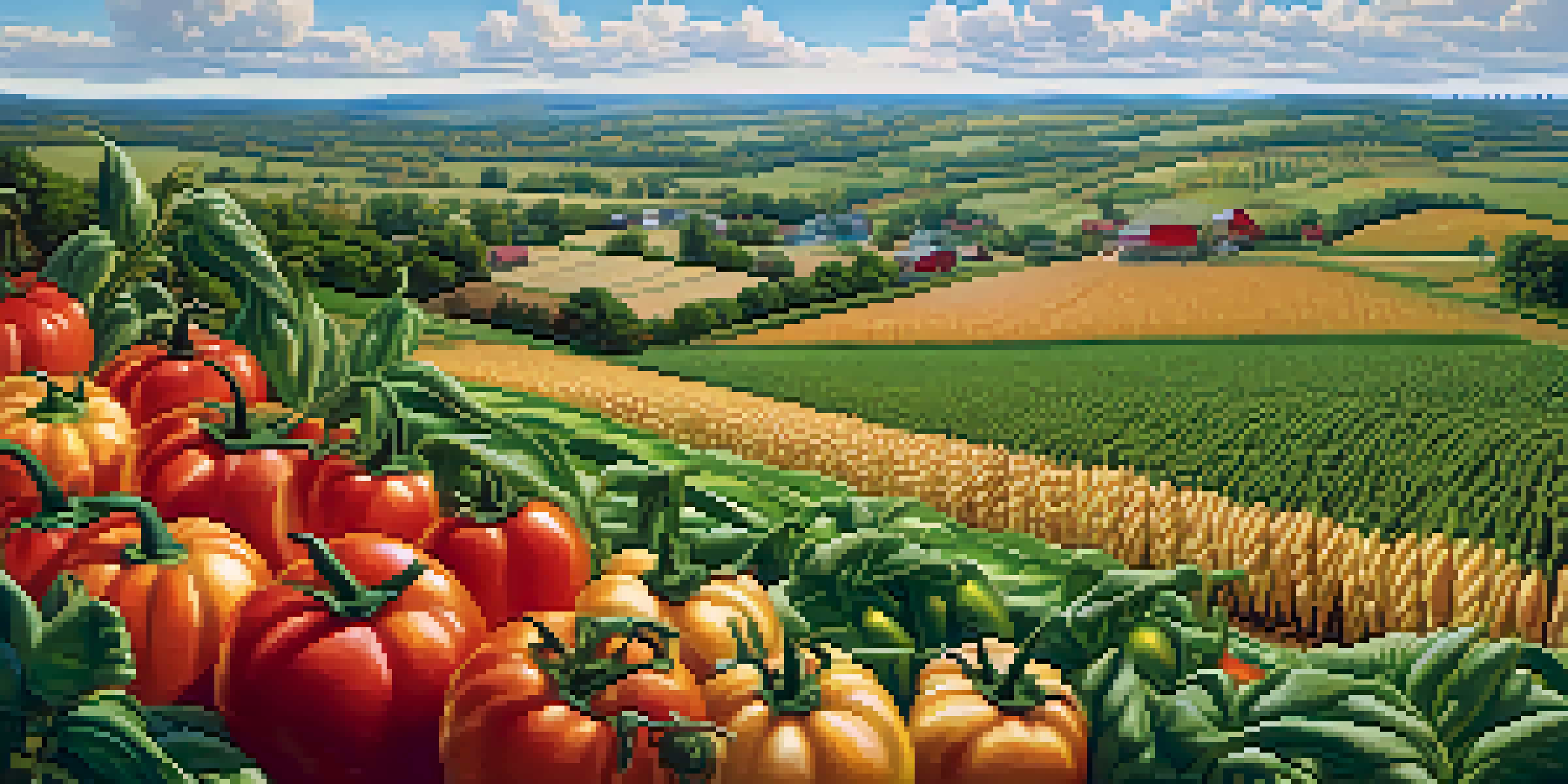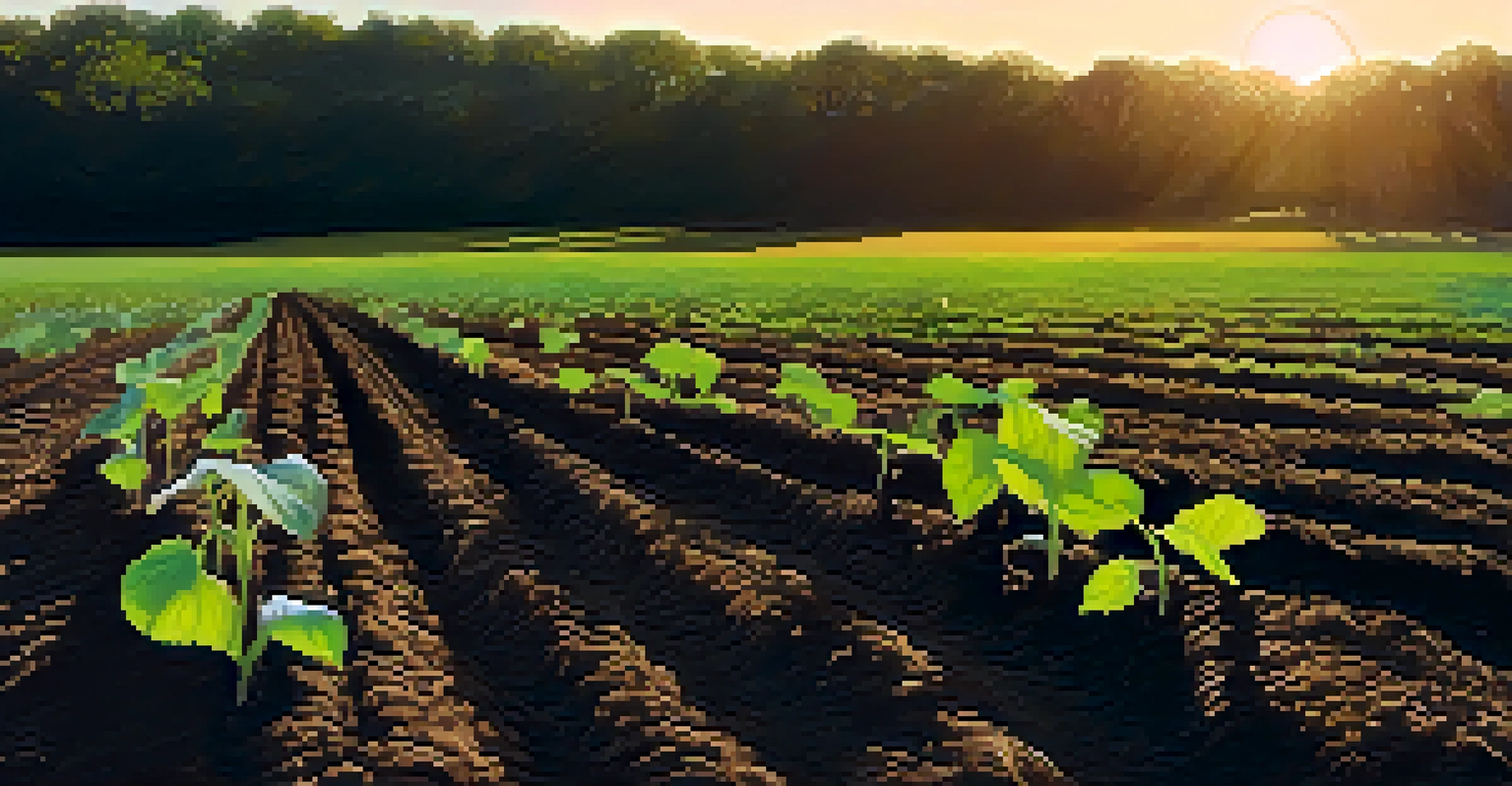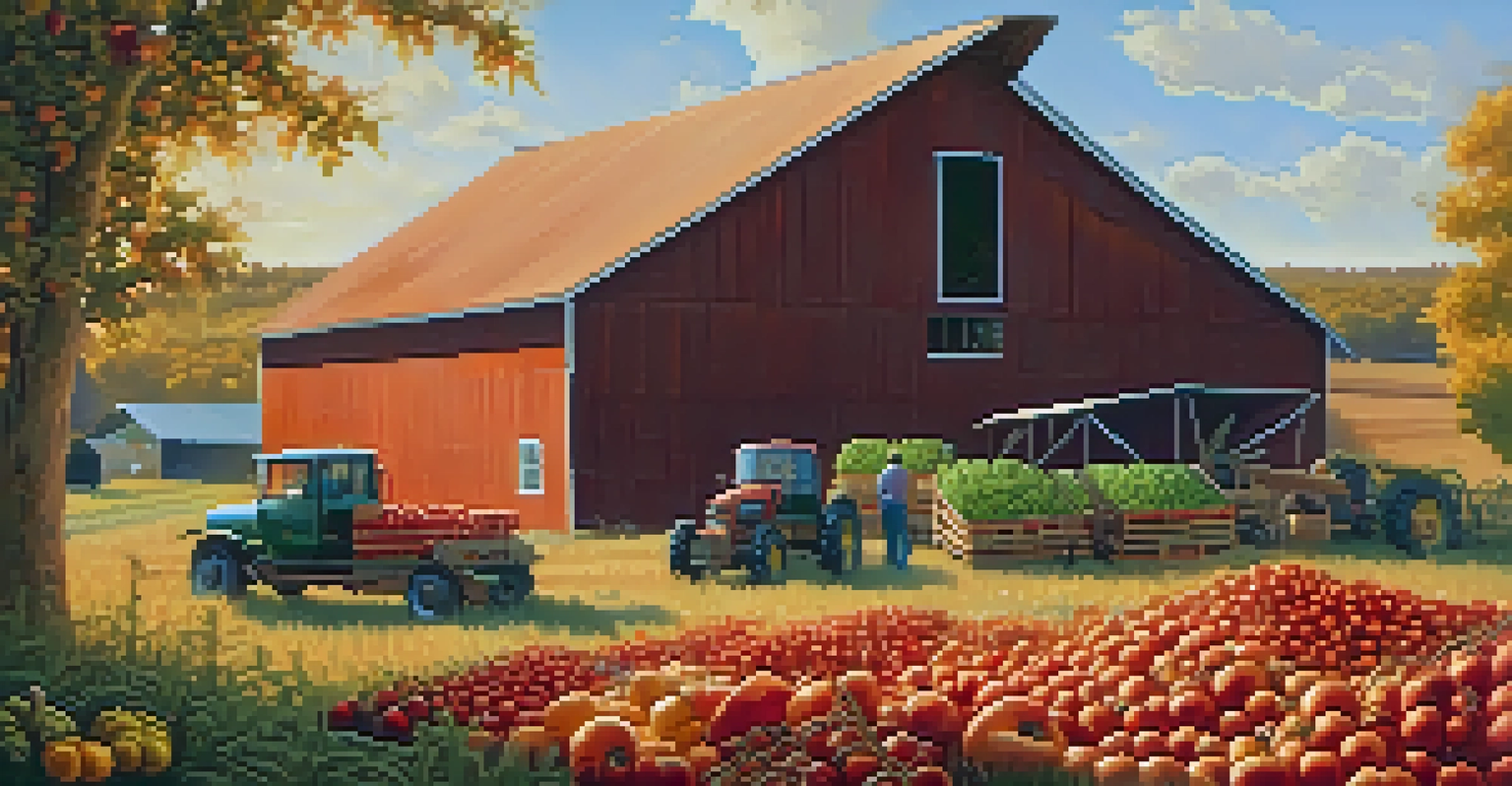Climate Zones of Missouri: Effects on Farming Practices

Understanding Missouri's Diverse Climate Zones
Missouri features a mix of climate zones, mainly classified as humid continental and humid subtropical. This diversity arises from geographical variations, such as elevation and proximity to water bodies. As a result, farmers must adapt to different weather patterns and growing conditions depending on their location within the state.
The farmer is the one who is able to produce and provide for others, regardless of the conditions he faces.
In the northern part of Missouri, the climate tends to be cooler and experiences more frost days, which can shorten the growing season for crops. In contrast, the southern regions enjoy a warmer climate, allowing for a longer growing season and the potential for more diverse crops. Understanding these nuances is essential for farmers to plan their planting and harvesting schedules effectively.
Moreover, the shifting climate trends, such as increased rainfall and fluctuating temperatures, further complicate farming practices. Farmers in Missouri need to stay informed about these changes and adjust their strategies accordingly to ensure successful yields.
Impact of Temperature Variation on Crop Selection
Temperature plays a crucial role in determining what crops can thrive in Missouri. For instance, northern farmers may opt for cold-tolerant varieties like winter wheat, while those in the south might grow heat-loving crops such as tomatoes and peppers. This selection is vital for maximizing yields and profitability.

Additionally, the temperature differences influence the timing of planting and harvesting. Farmers must monitor local forecasts and historical data to make informed decisions, ensuring they plant at the optimal time for their specific climate zone. This careful timing can mean the difference between a bountiful harvest and a disappointing one.
Missouri's Climate Affects Farming
The diverse climate zones in Missouri require farmers to adapt their practices based on regional temperature and rainfall variations.
As climate change continues to impact weather patterns, farmers need to be increasingly flexible and innovative regarding crop selection. This adaptability is key to maintaining agricultural productivity and sustainability in the face of unpredictable weather.
Rainfall Patterns and Their Effects on Irrigation Needs
Missouri's rainfall patterns are another significant factor that affects farming practices. The state generally receives enough precipitation to support crop growth, but variations exist between regions. For instance, the southeastern part of Missouri tends to be wetter, while the northwest may experience drier spells, necessitating different irrigation strategies.
Adaptability is about the powerful difference between adapting to cope and adapting to win.
Farmers in areas with less consistent rainfall may rely more on irrigation systems to ensure their crops receive adequate moisture. This could mean investing in drip irrigation or pivot systems, both of which can help optimize water usage. In contrast, those in wetter regions might focus on drainage solutions to prevent waterlogging.
Adapting to these rainfall patterns is essential for efficient crop management. By understanding local precipitation trends, farmers can implement the right irrigation practices to support healthy plant growth and conserve water resources.
Soil Types Across Missouri and Their Agricultural Implications
The diversity of soil types in Missouri is influenced by its climate zones and geographical features. Rich, loamy soils are found in the fertile plains, while sandy soils may dominate in other areas. This variation affects crop productivity and farming techniques employed in different regions.
Farmers must assess their soil composition to determine the best crops and practices for their specific location. For example, loamy soils are ideal for a wide variety of crops, whereas sandy soils may require specific amendments to retain moisture and nutrients. Understanding these differences helps in maximizing yields.
Soil Types Influence Crop Choices
The varying soil types across Missouri dictate the best crops and agricultural practices for maximizing yields.
Additionally, soil health is crucial for sustainable farming. Missouri farmers are increasingly turning to practices such as crop rotation and cover cropping to maintain soil quality and fertility, ensuring long-term agricultural success.
Seasonal Changes and Their Effects on Planting Schedules
Seasonal changes in Missouri significantly impact planting schedules and farming practices. The state's four distinct seasons dictate when farmers can sow seeds and when to expect harvests. This rhythm of nature requires farmers to be in tune with their environment to optimize productivity.
In general, spring is the prime time for planting, but the specific timing can vary by region due to temperature and soil conditions. Farmers often rely on local knowledge and data to decide the best time for planting different crops, ensuring they avoid risks associated with frost or drought.
As climate change leads to unpredictable weather patterns, farmers face new challenges in adhering to traditional planting schedules. Adjusting to these changes is essential for maintaining crop health and yield.
The Role of Climate in Pest and Disease Management
Climate conditions directly influence the prevalence of pests and diseases in Missouri agriculture. Warmer temperatures and increased humidity can create a more favorable environment for pests, posing risks to crops. Farmers must be vigilant in monitoring these factors to protect their harvests.
Implementing integrated pest management (IPM) strategies can help mitigate these risks. IPM involves a combination of techniques, including biological control, crop rotation, and targeted pesticide application, to manage pests effectively while minimizing environmental impact. Understanding local climate conditions allows farmers to tailor their IPM strategies accordingly.
Climate Change Challenges Agriculture
Farmers must innovate and adjust their strategies to cope with the impacts of climate change on agricultural productivity.
Moreover, staying informed about emerging pests and diseases is crucial for timely intervention. By adapting to climate changes, farmers can better safeguard their crops and ensure a successful harvest.
Future of Farming in Missouri Amid Climate Change
The future of farming in Missouri is closely tied to the ongoing effects of climate change. Rising temperatures and shifting weather patterns present both challenges and opportunities for farmers across the state. Adapting to these changes is essential for maintaining agricultural productivity and sustainability.
Farmers are increasingly turning to innovative practices, such as precision agriculture, to optimize resources and improve yields. This technology allows for data-driven decision-making, helping farmers adapt to changing climate conditions. By investing in these tools, they can better respond to weather variations and market demands.

Ultimately, the resilience of Missouri's agricultural sector will depend on its ability to adapt to a rapidly changing climate. With proactive strategies and a willingness to embrace change, farmers can continue to thrive in this dynamic environment.